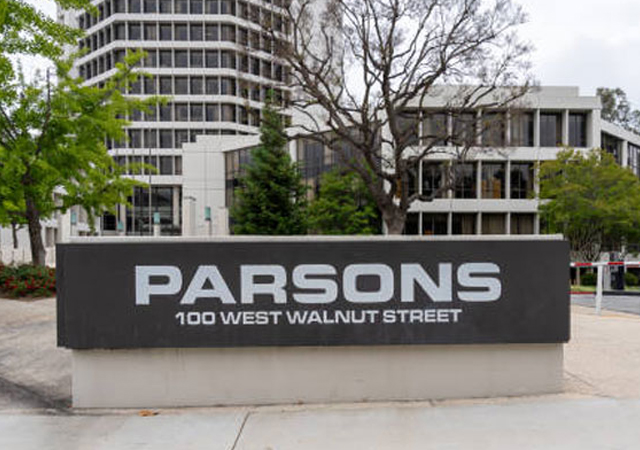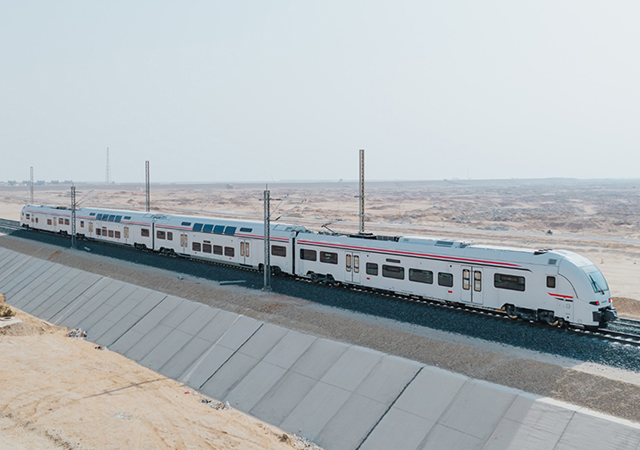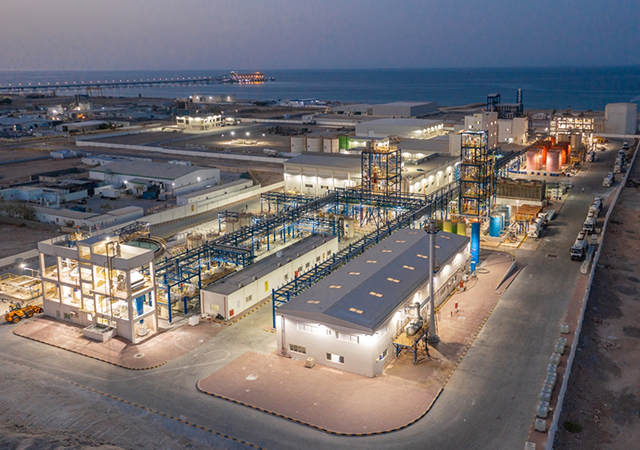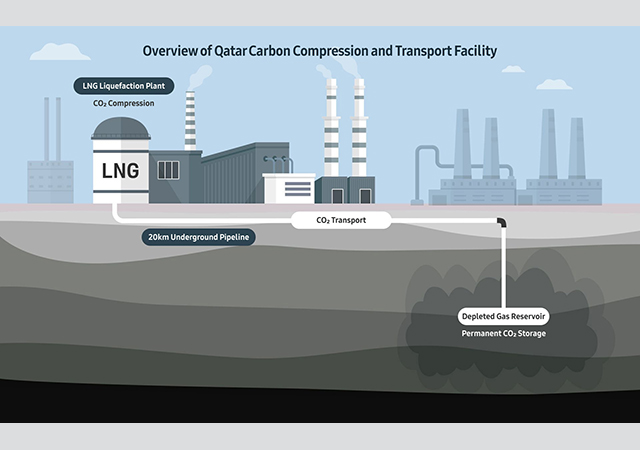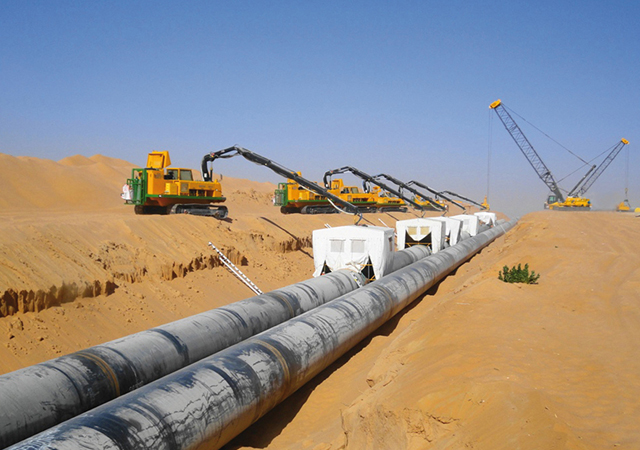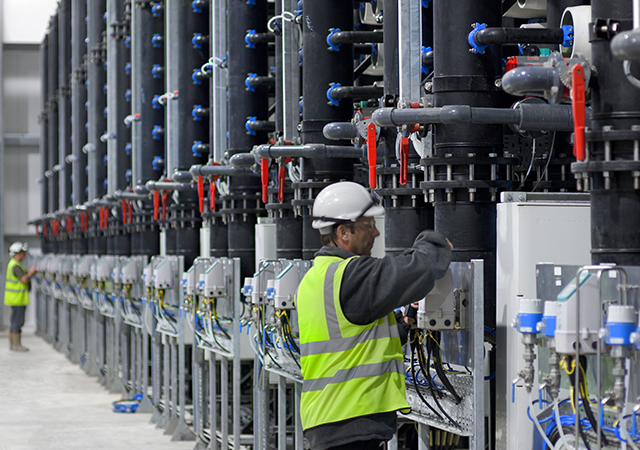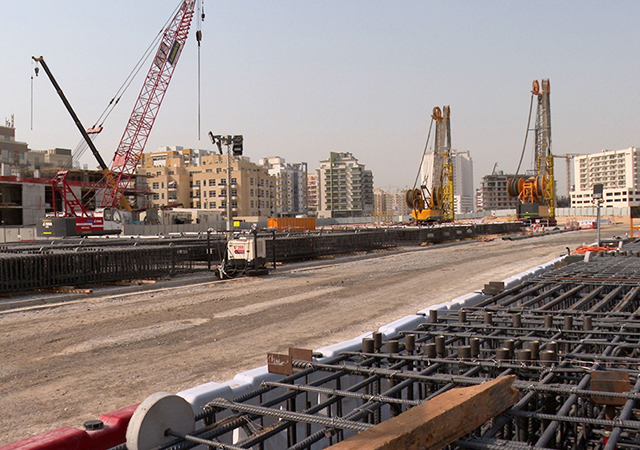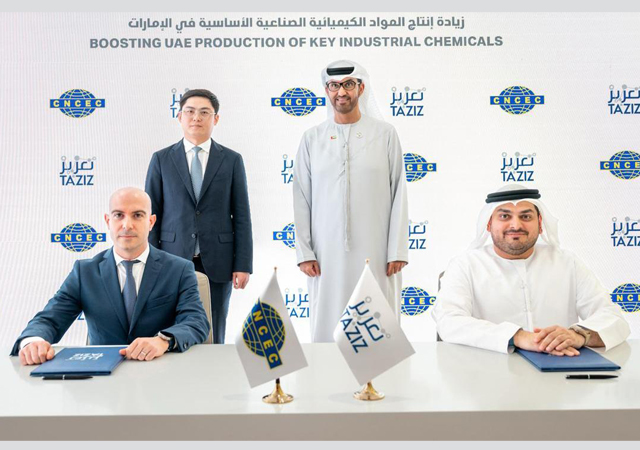
 Eng Aftab and Eng Ibrahim... highlighting the benefits of microsilica.
Eng Aftab and Eng Ibrahim... highlighting the benefits of microsilica.
Ahmad Ibrahim, general manager, Elkem Materials Middle East and Africa and Ahmad Aftab, marketing manager, Arabian Trading, Elkem’s authorised dealer in the UAE, elaborate on how the company’s microsilica enhances the properties of concrete.
Elkem microsilica – which plays a vital role in the physical and chemical properties of fresh and hardened concrete – has been used worldwide in the construction of skyscrapers, bridge construction, marine structures, parking structures, water supply and sewerage facilities, oil and gas sectors, airports, roads, railways and seaports because it ensures the durability of these structures.
Technology
Microsilica is a mineral composed of ultra-fine amorphous spheres of silicon dioxide (SiO2), produced during the manufacture of silicon or ferrosilicon. This tightly controlled electro-metallurgical process involves the reduction of high-purity quartz in electric arc furnaces at temperatures of over 2,000 deg C.
Microsilica is formed when SiO gas, given off as the quartz reduces, mixes with oxygen in the upper parts of the furnace. Here the SiO is oxidised to SiO2, condensing into the pure spherical particles of microsilica forming the major part of the smoke or fume from the furnace. Hence the alternative names for the material – condensed silica fume, silica fume, silica powder, amorphous silica, silicon dioxide powder or condensed SiO2 fume.
Chloride resistance
Microsilica is highly suitable for use in concrete that is subject to chloride attack (road salt, sea salt). The addition of Elkem microsilica will greatly reduce the penetration of chlorides into the concrete and thereby delay the onset of corrosion.
Furthermore, the use of Elkem microsilica in concrete will reduce the rate of corrosion after initiation. Reinforcement in concrete is normally protected against corrosion. A high alkalinity gives the pore water a pH of 12.5 to 14, which forms a protective passive oxide layer on the steel surface. Active corrosion begins if the passive film is broken, locally or over large areas. This can happen as a result of chloride ingress or carbonation. If a sufficiently high concentration of chloride ions is established on the steel surface, the passive layer will be disrupted locally, thus creating a small anode to the large cathode of passive steel and intensifying the corrosion process (pitting). (Graph 1)
The most important sources of chloride contamination are sea and road salts. Investigations prove the dramatic reduction in the rate of chloride diffusion, which is achieved by Elkem microsilica in concrete mainly due to the refinement of the concrete pore structure. The use of the microsilica reduces the amount of continuous capillary pores, hence is considered as the best solution to reduce chloride penetration.
Resistance to sulphate attack
The addition of Elkem microsilica to Portland cement (Type I) will make concrete at least as resistant to sulphate attack as concrete produced with sulphate-resistant cement (SRC or Type V). In addition, microsilica will give concrete increased strength and reduced permeability.
Sulphates are common in soil, groundwater, seawater and effluent discharges from industry. Damage caused by sulphates has been observed particularly in foundations, sewage systems and marine structures.
Sulphates react with calcium hydroxide, Ca(OH)2, forming gypsum, which may then react with the tricalcium aluminate, C3A, in the concrete to form ettringite and monosulfoaluminate. These reactions result in a substantial increase in volume with subsequent cracking and peeling.
Some reports (such as Fidjestol 1990) indicate that the initial formation of gypsum is sufficient to cause disruption. The resistance of concrete to sulphate attack depends upon conditions of exposure [the amount of aggressive sulphates in the concrete environment], the permeability of concrete [the rate at which sulphates may penetrate into the concrete], the composition of cement [content of C3A, and the amount of Ca(OH)2 formed in the hydration process of the cement] and access to moisture. (Graph 2)
The addition of Elkem microsilica to OPC [ordinary Portland cement] will give higher resistance to sulphate attacks, compared to SRC. Elkem microsilica provides resistance against sulphate attack for the following reasons:
• It reduces the amount of reactive Ca(OH)2 in the concrete; and
• It reduces the permeability of concrete, which restricts, and thereby prevents the ingress of deleterious sulphates.
In order to produce sulphate-resistant concrete, it is advisable to:
(i) Add 8 to 10 per cent Elkem microsica to OPC;
(ii) Use a water-reducing admixture in order to lower the water/cement ratio;
(iii) Ensure proper placing and curing of the concrete;
(iv) Minimise binder content (the binder is attacked, not the aggregate).
Resistance to acids
Protective measures must always be taken to prolong the service life of concretes exposed to acidic environments. Inorganic acids such as hydrochloric acid (HCl), nitric acid (HNO3) and sulphuric acid (H2SO4) are highly corrosive to concrete because they form a soluble calcium salt, which lowers the strength of the material. Organic acids such as acetic, formic and lactic are also corrosive to Portland cement concrete.
Permeability is a key factor governing the rate of deterioration of concrete exposed to aggressive chemicals. When permeability is low, the decomposition is limited to the surface, which could otherwise spread into the interior of the concrete. The rate of deterioration is accelerated if the products of chemical decomposition are washed away or when the concrete surface is exposed to mechanical abrasion.
In the presence of highly corrosive chemicals, one way to protect the concrete is with a surface coating. However, long-term protection depends on the durability of the coating itself.
Another approach to protection of horizontal concrete surfaces is to provide a 20 to 50 mm overlay of a very low water/cement ratio concrete. Water-reducing and sometimes latex admixtures are commonly used to achieve dense concretes with water/cement ratios of the order of 0.30. (Graph 3)
The addition of Elkem microsilica contributes to increased chemical resistance in several ways. Firstly, the reduced permeability of microsilica concrete means a reduced rate of transport and therefore decreased dissolution of calcium. Secondly, the pozzolanic reaction means that less calcium is present in the form of easily soluble calcium hydroxide. In the case of strong acids, the improved permeability will often be of minor consequence, since the attack will take place on the surface of the concrete. US Borax plant in Death Valley, US, is a good example where specially-designed Elkem microsilica concrete was used to provide chemical resistance to areas subjected to acids pills (5 per cent H2SO4) and exposure to borax (Na2B4O7 10H2O).
Alkali silica reaction
This is a reaction between alkalis Na2O and K2O (found in cement or added to the concrete), and reactive siliceous mineral components of the aggregates. There has to be moisture present in the concrete in order for the reaction to take place. The reaction product is an alkali-silicate gel that, on absorption of water, will expand and generate hydraulic stresses, which may cause cracking.
Following is necessary for alkali silica reactions to take place:
(i) High alkali content of the concrete, normally contributed from the cement – that is, the cement has to contain a sufficiently high level of alkalis. An upper level of 3 kg of Na2O equivalent per cu m is sufficient to prevent attacks.
(ii) Access to moisture, minimum 75 per cent RH is required.
(iii) Quantity of reactive aggregates and grain size of aggregates are also other factors. (Graph 4)
Elkem microsilica suppresses alkali silica reaction as follows:
(a) By binding early the free alkalis that are already present in the fresh or plastic concrete;
(b) Reducing the permeability of concrete, thus limiting the penetration of moisture or external alkalis; and
(c) Allowing a reduction in the cementcontent without affecting the strength of the concrete, thus the alkali contribution from the cement can be reduced.
Resistance to corrosion currents
Electric resistivity and alternating currents (AC) resistance are measures of the ability of concrete to resist corrosion currents encountered in steel-reinforced concrete under chloride attack in marine environments. An increased electrical resistivity makes reinforced concrete more resistant to galvanic corrosion currents by reducing the rate of corrosion.
Data indicate microsilica concrete has high electric resistance to the passage of corrosion current. Elkem microsilica improves electrical resistivity, which is more pronounced at high strength. The improvement is due to microsilica’s role in lowering the ion concentration in the pore solutions and providing a more discontinuous capillary pore structure.
Benefits
• Strength increases; column sizes are reduced thus providing more carpet area.
• Beams and slab thickness can be reduced thus more economical.
• Reduced column size can be used from ground to top floor; the same frame can be used throughout, thus offering benefits through reduced construction costs and speed
• Reduces total cementitious material for the same given mix.
Provided that the design and workmanship are handled properly, Elkem microsilica concrete offers characteristics that will ensure long-term durability and service life through:
• Dense microstructure;
• Low permeability;
• Decreased heat of hydration;
• Improved resistance to chloride ion penetration, chemical attack, abrasion and erosion, frost and scaling, alkali- aggregate reactions, sulphate attack, and steel corrosion resistance;
• Increased electrical resistivity;
• Increased compressive strength (more than 140 N/sq mm); and
• Longer maintenance-free life of structures.





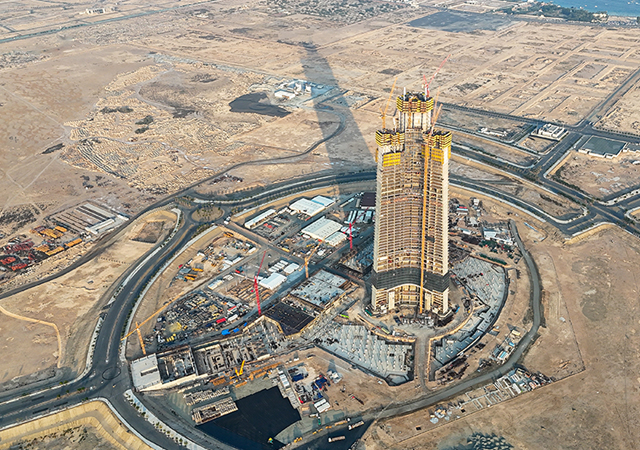



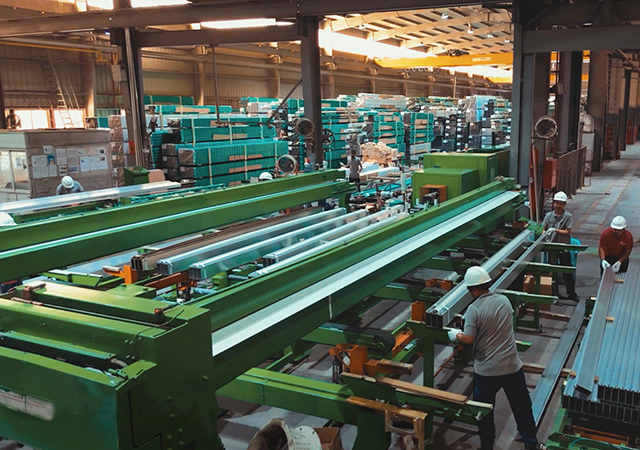


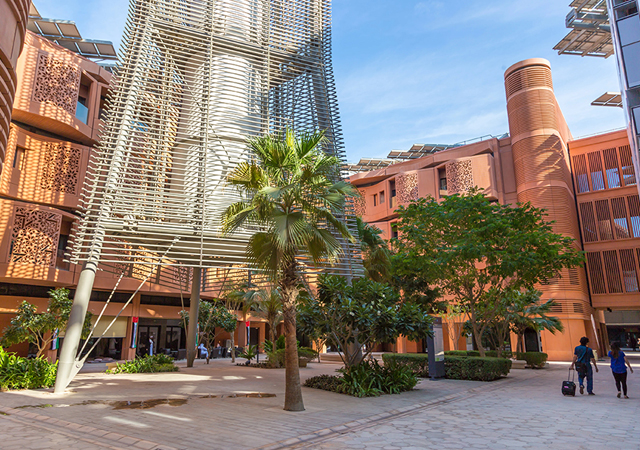


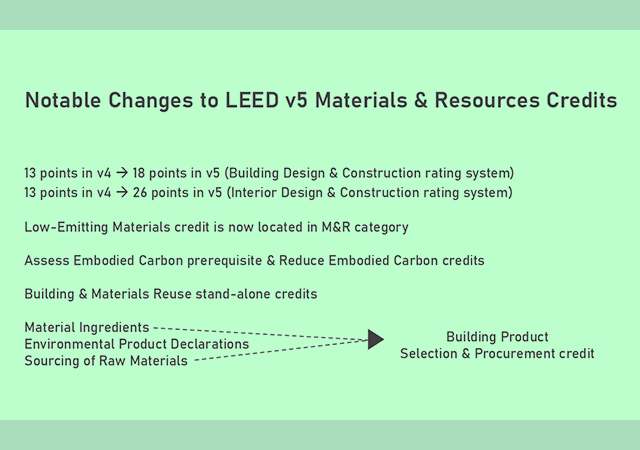
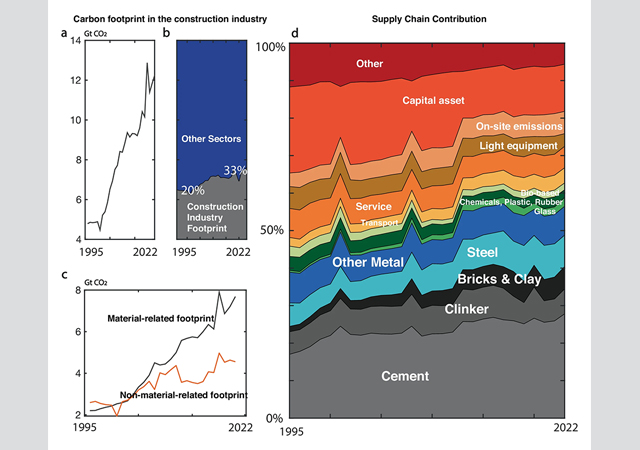
.jpg)

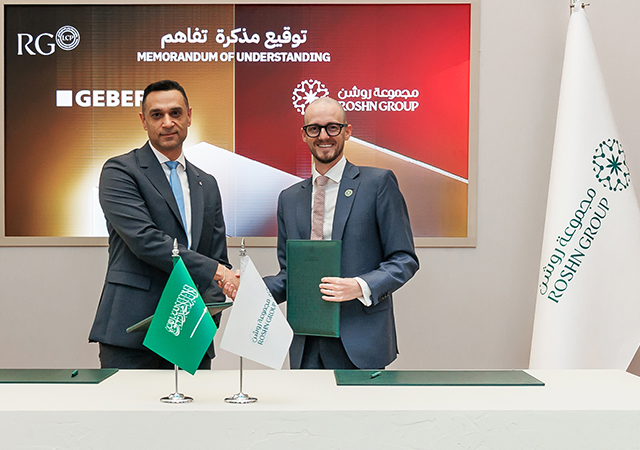



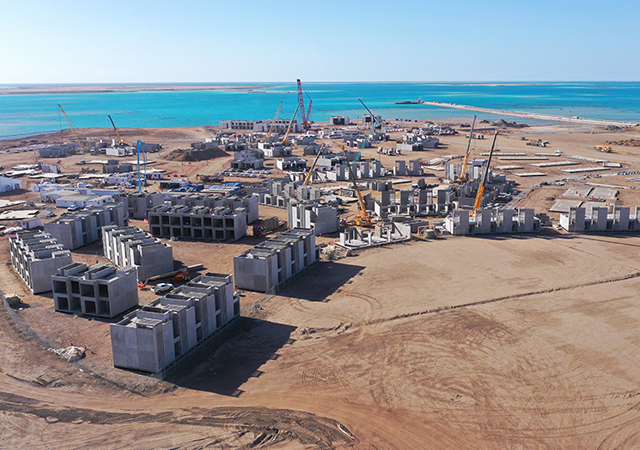



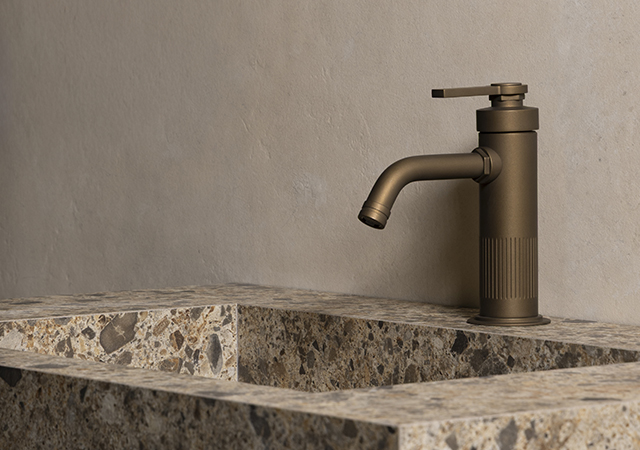



 (1).jpg)


